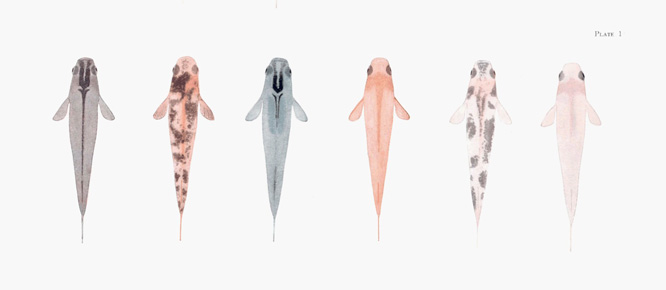Catch up on 2015’s most popular Science & Publishing posts!
Undergrads power genomics research
With 1014 authors, an article by Leung et al. in the May issue of G3 has the largest author list of any paper published in the journal. More than 900 of those authors were undergraduate students when they performed the research.
Human Genetic Diversity and Social Inequalities
Differences in genetic diversity between human populations can complicate certain social disparities, argue Noah Rosenberg and Jonathan Kang in a review published in GENETICS. But a controversial finding by economists — that genetic diversity is related to geographic patterns of economic development— is likely just a statistical fluke.

16 x 16 Colourful Faces from the British Library Collection, by Mario Klingemann. CC BY-NC 2.0
Wild zebrafish sex: a lab mystery solved
Laboratory zebrafish hide a dirty little secret. Although the tiny fish have proven to be a vital genetic model, zebrafish reproduction—at least in the lab—has wildly variable outcomes.
Introducing undergrads to primary literature in GENETICS
What if there was a way to ease new readers into a peer-reviewed paper? In 2012, GENETICS unveiled a new type of article for introducing primary literature into the classroom: the Primer. Primers in GENETICS now come in two flavors: Research Primers, and Model Organism Primers.
The molecules behind mimicry
The vibrant passion-vine butterfly species Heliconius erato doesn’t taste as good as it looks. The flesh of this South and Central American species accumulates toxic compounds to discourage would-be predators, who quickly learn to associate the butterflies’ unpleasant taste with their bold red warning colors and patterns.
But H. erato isn’t the only species that wears this particular danger sign.
Spotlight on 2014 research
From animal domestication to human genome variation, from loblolly genomes to lager genomes, from wild zebrafish sex to untangled metagenomes, last year brought plenty of high points for the GSA journals.
An arbitrary line in the sand: Rising scientists confront the impact factor
In November, GENETICS published an editorial that illuminates the struggles of scientists trying to both do good science and advance in their career, especially as related to the unintended effects of the Journal Impact Factor (JIF).
Vexed: why doesn’t eastern coral snake venom vary?
When an eastern diamondback rattlesnake bites its prey, it injects a cocktail of toxic proteins and peptides that attack on multiple fronts. But the precise recipe for this noxious mix is generally thought to depend on where the snake was born.

Left: Eastern coral snake (Micrurus fulvius); Right: Eastern diamondback rattlesnake (Crotalus adamanteus) Image credit: Kenny Wray, Florida State University
Medaka Genetic Toolbox: Old fish, new tricks
Since the 17th century, the tiny medaka fish that dart through rice paddies in Japan have been bred as living ornaments. Though in the wild they are a nondescript mud color, medaka occasionally turn up in flashier mutant varieties — orange-red, pearlescent white, black splotched — that were much prized by generations of fish fanciers. Around 1913, medaka color varieties caught the attention of zoologist Tatuo Aida.

Medaka varieties illustrated in Plate 1 of Aida (1921). From left to right: brown-black (wild-type), variegated orange-red, blue-black, orange-red, variegated white, white.































